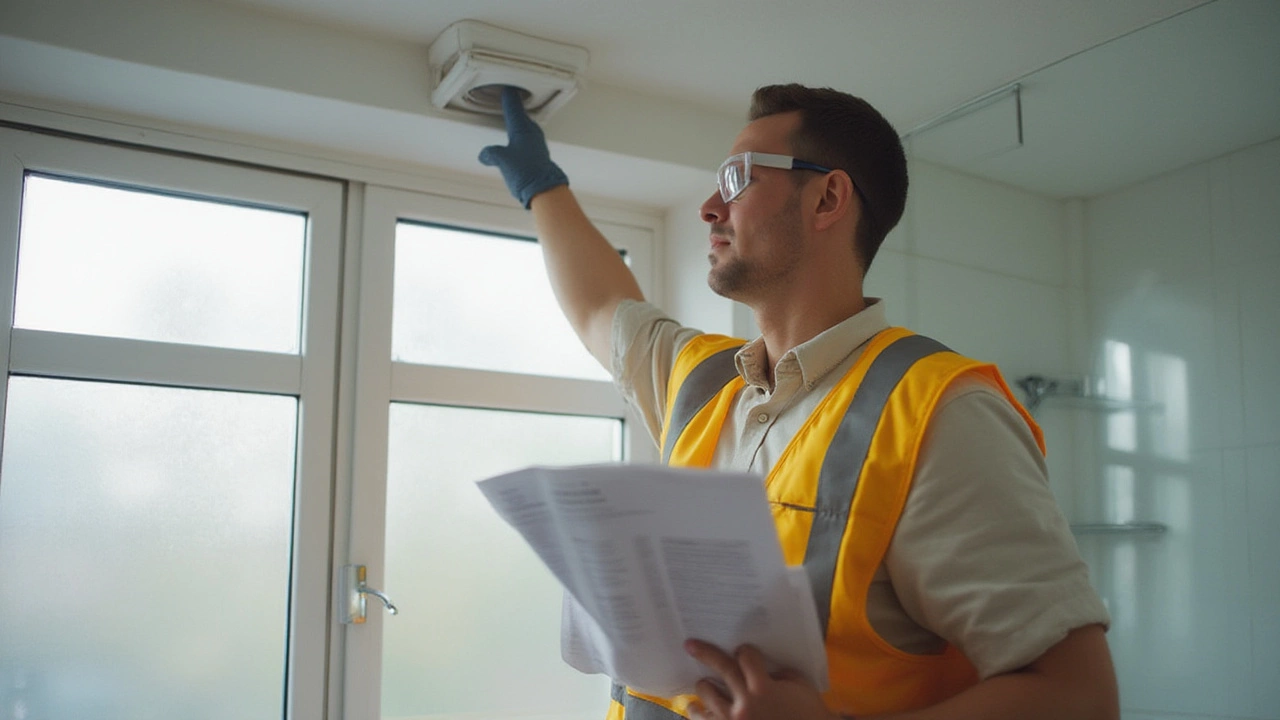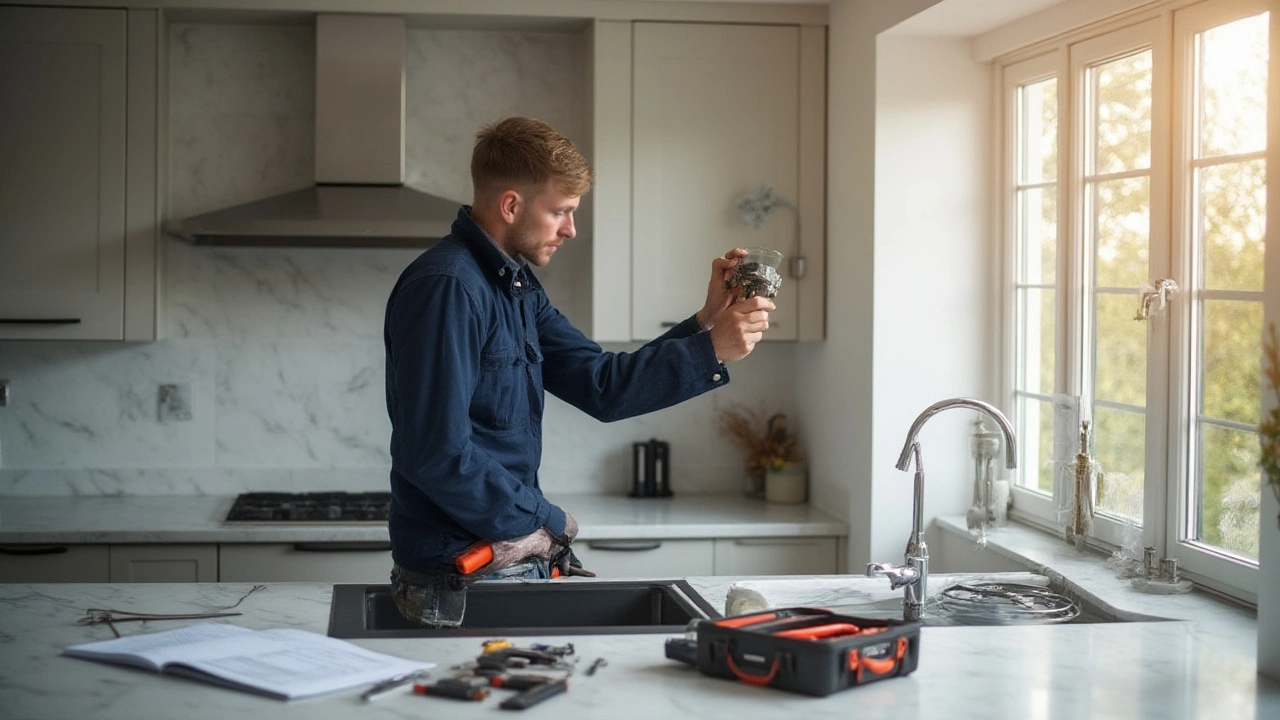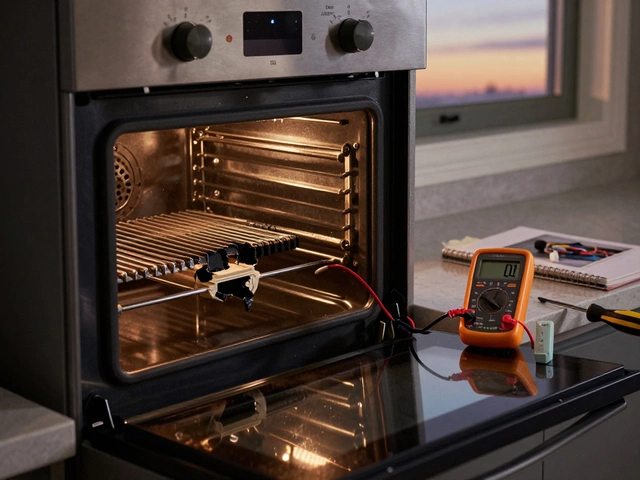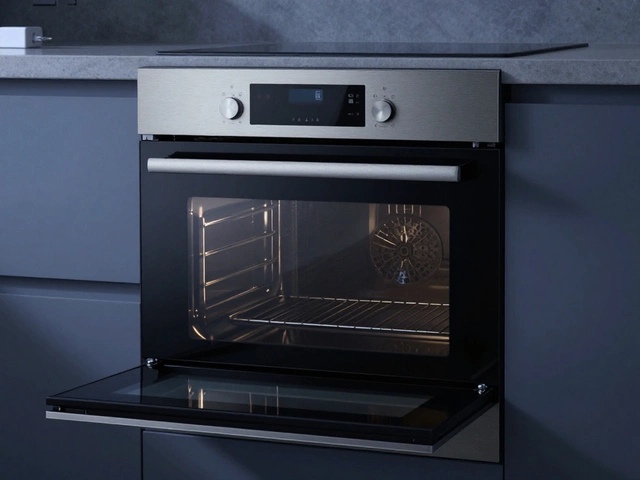Picture this: your kitchen fills up with steam quicker than Rex bolts for the front door when the post lands. Or maybe your bathroom mirror fogs up so much you can barely see your reflection after a shower. That’s when it hits—you need a trusty extractor fan. But who on earth should you call to install it? Electrician? Plumber? Your mate who owns every tool except the right one? The answer isn’t quite as simple as you might hope, and getting it wrong can mean soggy walls, the odd electric shock, or even worse (ask my neighbor, whose DIY attempt led to a bathroom blackout that lasted three days—true story!). There’s more to fitting extractor fans than just drilling a hole and plugging something in, so let’s get into the nitty-gritty of who’s actually responsible for putting in these mighty little ventilators.
Who Installs Extractor Fans—Specialists, Electricians, or DIYers?
So, who really puts in extractor fans? If you type that into a search bar, you'll get a mishmash of answers—some say 'only an electrician,' others claim it's a plumber's job, and a few reckon your Uncle Bob (the guy who installed your 'smart' lighting that’s never switched off properly since) is the go-to. Here’s how it works: most extractor fans—especially those in kitchens and bathrooms—are electrical appliances. In the UK, for instance, any work that connects a fan to your household wiring must comply with Part P of the Building Regulations. That basically means you’re legally meant to get a qualified electrician for the job, particularly if there’s any new wiring or the location’s considered a ‘special location’ (like the humid zone around your shower or bath).
Don’t just take my word for it. A recent survey by NICEIC, the UK’s main electrical safety group, found over 70% of DIY electrical jobs in private homes don’t meet safety standards. On the other hand, if it's just a like-for-like swap and you’re only changing the fan itself (not touching the wires), some folks with a knack for DIY might tackle it themselves, but it’s a risky game. Mess up the wiring and you could void your home insurance or worse, end up with a fried fan—or bathroom.
There are also specialists called ‘ventilation engineers’ or ‘ventilation contractors’ who handle the whole shebang: the wiring, the vent ducts, and the all-important hole through your brickwork or wall. For bigger fans or where powerful extraction is needed (like in a commercial kitchen), you’re almost always better off with a company that does both the electrical and ventilation work. The hourly rate for a registered electrician or specialist? You're probably looking at £40-£80 an hour in the UK, and a basic fan installation will take 2-4 hours, depending on the state of your walls and wiring.
But what about plumbers? They sometimes handle installations if the fan is being put in alongside a bathroom refit, but most leave the wiring to an electrician once the pipework or space is ready.
Here’s a handy breakdown (keep in mind, these are ballpark UK averages):
| Installer Type | What They Do | Typical Cost (incl. labor) |
|---|---|---|
| Electrician | Wiring, basic fan install | £100-£250 per fan |
| Ventilation Specialist | Wiring, ducting, external wall work | £200-£400 per fan |
| DIY | Fan replacement (no wiring) | £50-£100 (parts only) |
If in doubt, always check if your installer is NICEIC-registered (or holds the relevant certification in your country). This isn’t just red tape—it actually keeps you safe and ensures your guarantee isn’t just a bit of wishful thinking.
When You Need an Extractor Fan Installer
You might think extractor fans are just for kitchens and bathrooms, but the list is growing. Got a home gym that gets steamy? Utility room smelling a bit like my Rex after a rainy walk? Extractor fans to the rescue! But when do you need a pro installer, and when can you DIY?
The golden rule: if you’re creating a brand new opening (cutting through a wall, ceiling, or even a roof), bringing in outside power, or working in a room where water and electrics mingle, call a professional. It’s not just about safety—it’s about maximizing the fan’s life and performance. British standards say a bathroom should achieve 15 litres per second airflow (that’s about what it takes to fog up a mirror after a decent shower), while a kitchen needs 30 litres per second above hobs or 60 if it’s just the whole room.
Ever had a fan installed that both sounds and shakes like a cement mixer? Poor installation can do that. The best installers check the wall material, use special anti-vibration mounts, and seal any gaps (let’s keep the cold air, spiders, and next-door’s curry smell out). They’ll route ducting in a way that minimizes bends and stops condensation pooling inside. Yes, some cowboy jobs leave you with water dripping from the fan every winter.
And then there’s the legal side—come 2025, stricter building regs in parts of Europe and North America mean any fan placed in a ‘wet zone’ or ‘food prep area’ now has to be both IP rated (for waterproofness) and installed by someone registered as “competent.” Your insurance can refuse a claim if you go off-piste with a non-registered installer. Good ones even offer completion certificates, which you’ll want if you ever sell the house.
Here are a few red flags that mean you should absolutely not DIY:
- No isolator switch on the fan circuit
- Fan needs to vent through a hard wall or roof
- You’re not sure about cable load, fuses, or bathroom zoning laws
- Upgrading to a higher-wattage model
- The new fan is a different size from the old, meaning serious wall-filling/patching
Remember, a proper job isn’t just about plugging in a fan. It’s calculating air changes, figuring out the right route for ducts, and ensuring all your electricals are up to code. And yeah—if you rent, your landlord usually handles this, but let them know if your fan sounds like it's running on gravel. Modern fans are much quieter and use way less electricity (some models draw just 8 watts for steady running—that’s less than your phone charger!).

What Happens During Extractor Fan Installation?
Ever had tradespeople in your house? You need a sense of humor… and patience. But good extractor fan installers keep things tidy and speedy, given the job can get a bit messy when walls and ceilings are involved.
The process usually kicks off with a survey—some pros will pop round for half an hour, tape measure in hand, and ask a million questions about your cooking habits or shower times. Strange, but there's a method to the madness—they’re calculating airflow demands, the shortest duct runs, and how much noise you can tolerate. Then they’ll make sure the electrics in that zone are up to snuff. If not, there’s extra work and cost ahead.
The messy bit? Cutting through tiles, brick, or plaster, plus fitting vent grilles outside. Top installers use core drills and dust sheets (if your installer shows up without either, have a quiet word). They often drill a pilot hole from the inside, then finish the main hole from the outside to avoid chipping your brickwork. After making sure there’s an isolator switch nearby—UK regs say it can’t be inside the bathroom—they connect the wiring and secure the fan.
For fans with humidity or motion sensors, there’s a bit more fiddling: settings for how long the fan keeps running after a shower, or adjusting its sensitivity. Smart fans can even link up with your smart home kit (ask installers about this if you’re in deep with Alexa or Google Home).
Once the wires are in, a pro checks airflow (with fancy smoke pens or digital anemometers). If the room fills up with steam in five minutes, guess what—they’ll be making changes. Sometimes ducting gets insulated or adjusted, especially if it runs through cold loft spaces where condensation can be a problem. Last, holes are sealed, everything’s tested, and you get your paperwork.
Here's how a standard job breaks down time-wise:
| Step | Time Estimate |
|---|---|
| Site survey/prep | 30-60 minutes |
| Cutting the opening | 30-90 minutes |
| Wiring & mounting fan | 45-90 minutes |
| Ducting (if needed) | 1-2 hours |
| Testing | 15-30 minutes |
Fans in flats, apartments, or old houses can take longer if the walls are thicker or you need to run ducts across ceilings. Expect the occasional surprise—last time I got a fan fitted, they found an old pipe in the wall right where the vent was supposed to go. Cue some creative rerouting (and one more mug of tea for the installer).
The Legal Side: Regulations and What to Watch Out For
By now, you’ve probably realized extractor fan installation isn’t just a bucket-and-screwdriver job. UK and EU building regs are tightening up to make sure your install doesn’t cause fires or become a leaky, draughty mess. Even in the US, local codes will often require a GFCI-protected supply for bathroom fans, and venting directly outside (no more dumping damp air into the loft, folks—that causes mold and roof rot).
If you’re in England or Wales, Part P of the Building Regs covers all electrical work in what they call 'special locations'—including rooms with baths, showers, and sinks. All new fan circuits in these places must be signed off by someone who’s registered with one of the big electrical safety bodies, like NICEIC or NAPIT. And replacement of an extractor fan that changes the way it’s wired (beyond a like-for-like swap) also falls under this rule.
Scotland is a bit stricter still, and building warrants are needed if you plan to cut through outside walls in shared flats or historic homes. Most European countries have similar rules, and if your home is listed or part of a conservation area, always check with your council before letting an installer anywhere near the exterior brickwork.
Insurance companies can be absolute sticklers too—they might ask for proof that your fan was installed by a certified pro before approving a claim for fire, flood, or water damage. Without proper sign-off, you could be left footing a massive bill. Leave the cowboys to the wild west.
A final tip: always get your installer to provide a minor electrical installation certificate if new wiring is run. Some even register the job with building control as part of their fee. And if your home has an allergy sufferer or pets like my stink-loving Rex, ask about fans with integral carbon filters or pollen screens—they don’t just deal with moisture, but cut down odors and dust too.

Tips for Choosing the Right Installer—and The Fan That Actually Fits Your Life
Okay, so you’re ready to get a new fan. How do you pick the right person (and the right piece of kit) for the job? Recommendations are gold. Ask friends or look for online reviews—ideally, plenty of them and recent ones. Sites like Checkatrade or Safe Local Trades let you filter by qualifications, and you’ll see at a glance who works with brands you trust. Don’t be lured in by impossibly low prices. If a quote is much cheaper than the rest, ask what’s included—some firms leave out ductwork or exterior vents, which you absolutely need for a proper install.
Always check your installer is registered with an official scheme—NICEIC, NAPIT, ELECSA, or approved by your local authority if you’re outside the UK. This isn't just about compliance: good installers offer advice on the extractor fan installation that best suits your room. Too powerful and you’ll end up with a cold draught every time it kicks in; too weak, and your walls will start peeling. The best installers bring airflow testers to the survey and aren’t scared off by tricky jobs—like tiled ceilings or small spaces.
Now, what fan should you pick? Look out for the airflow rating—the minimum in a bathroom is 15 l/sec, but bigger is often better if you’ve got a windowless room or if your teen spends way too long in the shower. For kitchens, more is needed: try for 60 l/sec if you do loads of frying. Some of the quietest fans on the UK market run at 19 decibels (quieter than your fridge), and new models with humidity and motion sensors mean you almost never have to touch a switch.
If you’ve got pets, consider a fan with filters you can clean out regularly, as fur and fluff are notorious for clogging blades. For allergy-prone households, look for fans that have pollen or carbon filters.
And here’s a tip: ask if your chosen fan qualifies for a manufacturer’s extended warranty if installed by a pro. Some leading brands offer five years’ cover, but only if the installer adds their details to the warranty card. Make sure you keep every receipt and the certificate your installer gives you; moving home and missing this paperwork can be an expensive mistake.
So next time your mate says, “I’ll sort that fan out for a tenner,” thank him, then call a real pro instead… or you might end up with more than just steamy mirrors and lingering smells to worry about.





